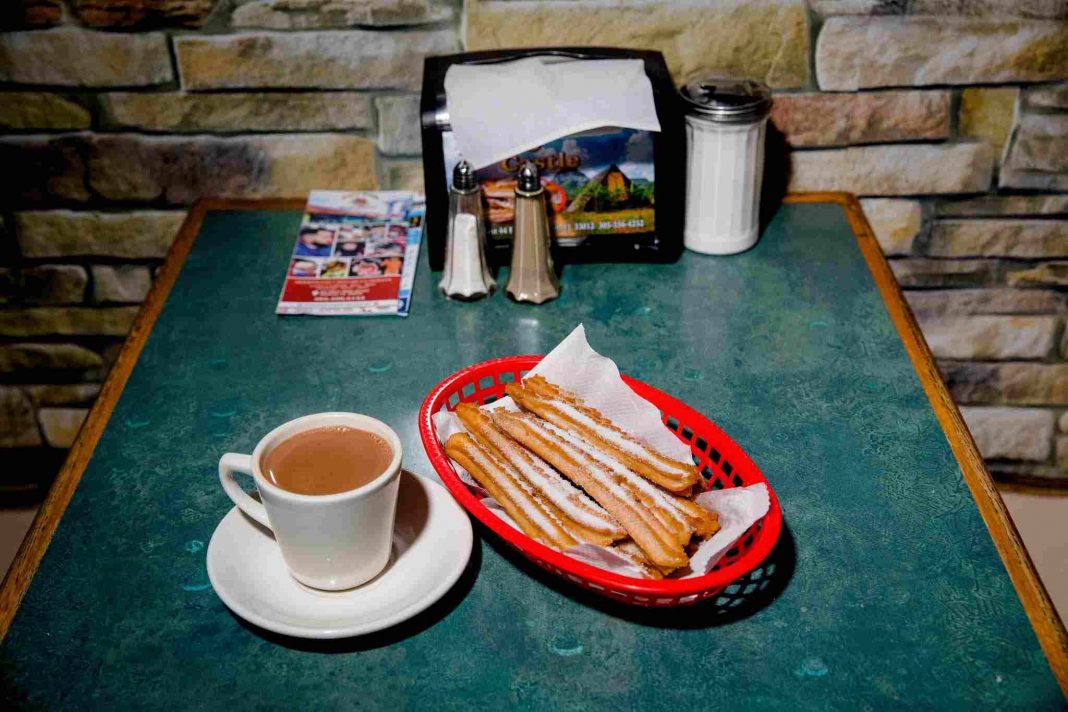Cold winter days in South Florida are unusual and short, especially in the summer. The one thing that does not change when the temps drop below 60 degrees is the huge queues for freshly fried churros and steaming cups of rich hot chocolate.
Winter is the busiest season for churros in the Miami region, with hundreds of establishments open all year, including several that specialise entirely in the sweet dessert.
The locals, bundled up in puffy coats and plush boots, wait in lengthy, serpentine lines in the freezing weather to get their hands on anything warm, according to Arletty Hernandez, a 21-year-old student. When she returned to her apartment after picking up her churros from La Palma on Southwest Eighth Street, she shivered and stated, “It’s a Miami thing.”
Hundreds of people queue up in the frigid weather at La Palma, which debuted in 1979 and is owned by the same family that owns Versailles Restaurant, for the iconic deep-fried churros coated with sugar, which are served with a rich, Spanish-style hot chocolate. The colder the weather becomes, the more churros are sold. According to Nicole Valls, the owner’s granddaughter, the employees may sell approximately 2,000 items in a single night if business is very strong.
Besides learning about Versailles when you come to Miami, “you learn about La Palma during the winter,” said Nicole Rosario, 48. She made the last-minute choice to stop by La Palma for churros on Sunday after attending a wedding in the area.
In a daring act of defiance on Sunday, Sara Manis, 63, braved the lines for churros, something she’s wanted to do since she first read a report about it on the local news many years ago. “It was the first time I had ever experienced it like that,” she said of the delectable dessert.
La Palma isn’t the only spot where there are a lot of people. People may expect to wait as long as 20 minutes to sit inside Morro Castle in Hialeah, another old-school restaurant that sells churros all year long. Churros are 20 cents each at Morro Castle, which is open all year. When the temperatures drop, the cafeteria-style restaurant, which first opened its doors in 1966, may sell as much as 3,000 churros in a single day, according to Leo Villalobos, the restaurant’s owner and nephew of the establishment’s founder.
The recipe, which calls for just flour, oil, water, and salt, was adapted from a dish from Cuba, where Mr. Villalobos’s uncle had a restaurant. In order to extrude the dough into the characteristic fluted form, a buddy constructed a pedal-operated machine for Morro Castle. The hot chocolate, which is likewise dense at this establishment, is produced using two different milks, sugar, chocolate, and cornstarch, which is essential to its thickness.
Regarding individuals searching for the sweet delicacy throughout the winter months, Mr. Villalobos described it as “a type of hand-me-down tradition.” There has been a tradition going on for decades, and they brought you as a youngster, and they continue to bring their children and grandchildren.”
According to Maria Paz Moreno, a professor of Spanish at the University of Cincinnati and author of “Madrid: A Culinary History,” the origins of this Miami tradition may be traced back to Spain, where the churros and hot chocolate combo is traditionally served as breakfast. Although the churro’s origins may be traced back to a 13th-century Arabic cookbook that describes a dough formed with flour and water that is cooked in oil, the term “churro” hasn’t yet been coined for this particular kind of dough.
Another cookbook, which she refers to as the “Bible of Spanish food,” was published in 1611 and was authored by Francisco Martnez Motio, a chef who worked for the King of Spain at the time of its publication. There’s also a recipe for churros, which Martnez Motio referred to as “fruta de sartén,” or “fruit of the frying pan,” according to Dr. Moreno.
According to the Real Academia Espanola, an organisation dedicated to the preservation of the Spanish language, the term “churro” was not coined until 1884, according to Sarah Portnoy, a Latinx Food Studies professor at the University of Southern California, Dornsife, and the author of “Food, Health, and Culture in Latino Los Angeles,” which was published in 2012.
The thick hot chocolate, on the other hand, was brought to Spain by the Aztecs, who lived in Mexico. Doctor Moreno described the Aztec version as a thick drink brewed with cacao that was bitter, thickened with maize and flavoured with chiles, and thickened with corn flour. It was made more appealing to the Spaniards’ taste buds by the addition of sugar and vanilla.
As Laura Luque, a Colombian who works at Santo Dulce, which has numerous locations in Miami and specialises in churros, hot chocolate and ice cream, said, the company’s proprietors did not want the business to specialise on a single sort of churro. Yule Nuez, who is originally from Venezuela, and she are the co-owners of the company. The original cinnamon sugar churro is available as well as a range of different tastes such as guava and cheese, dulce de leche with coconut, and maple bacon churros.
The majority of Santo Dulce’s business is conducted during the winter months. Even last week, when the temperature plummeted to the mid-50s, people stood in line for more than an hour, and yes, they continued to get ice cream and milkshakes despite the frigid weather. Temperatures are expected to plunge into the 30s this weekend.

